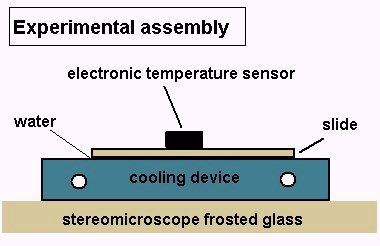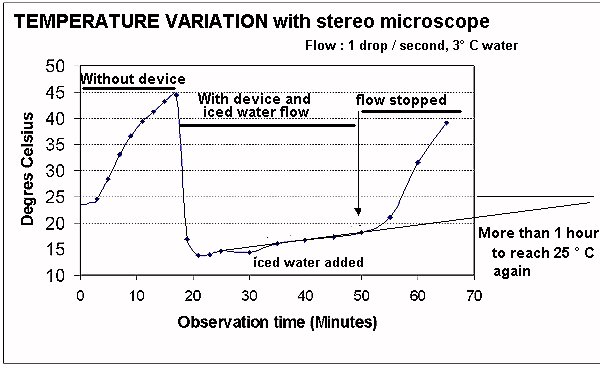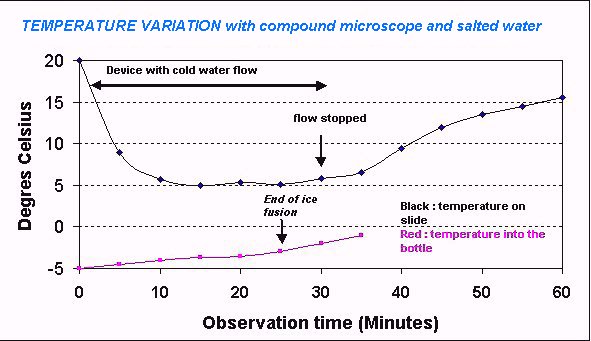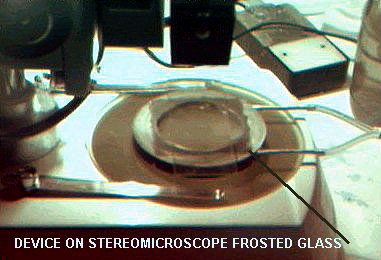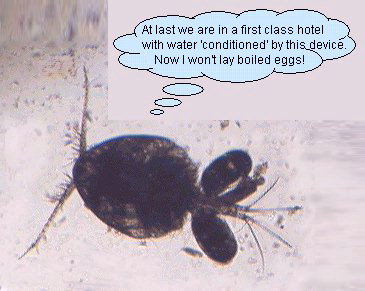| The graph below shows temperature
evolution with and without this device, plotted against observation time
with a stereo microscope. Half a liter of 3°C water (with 3 little
ice cubes) has been used with one drop/second flow rate. The first part
of curve shows the temperature rise on slide without the device; it reaches
45°C in less than a quarter of an hour! In the second part, the device
is used and water flow enabled; the temperature decreased to 14°C then
increased slowly. A temperature of 25°C should have been reached more
than an hour after. To demonstrate the device's efficiency, water flow
was stopped at 50 min; temperature again increased rapidly (third part
of the curve).
Note 1: After 30 min, cold water (5°C)
was added into upper bottle and its contents stirred, note temp. dip on
graph. Stir water from time to time.
Note 2 : Efficiency of device is increased
if you glue 2 wedges (2 mm thick) onto lower side of PVC ring, to prevent
lower glass window touching microscope plate or frosted glass.
Note 3 : In my device, the tube diameter I
have used is a little too narrow and flow rate is slowed down. Air tubing
for aquarium, as specified in parts list, should work better. |
